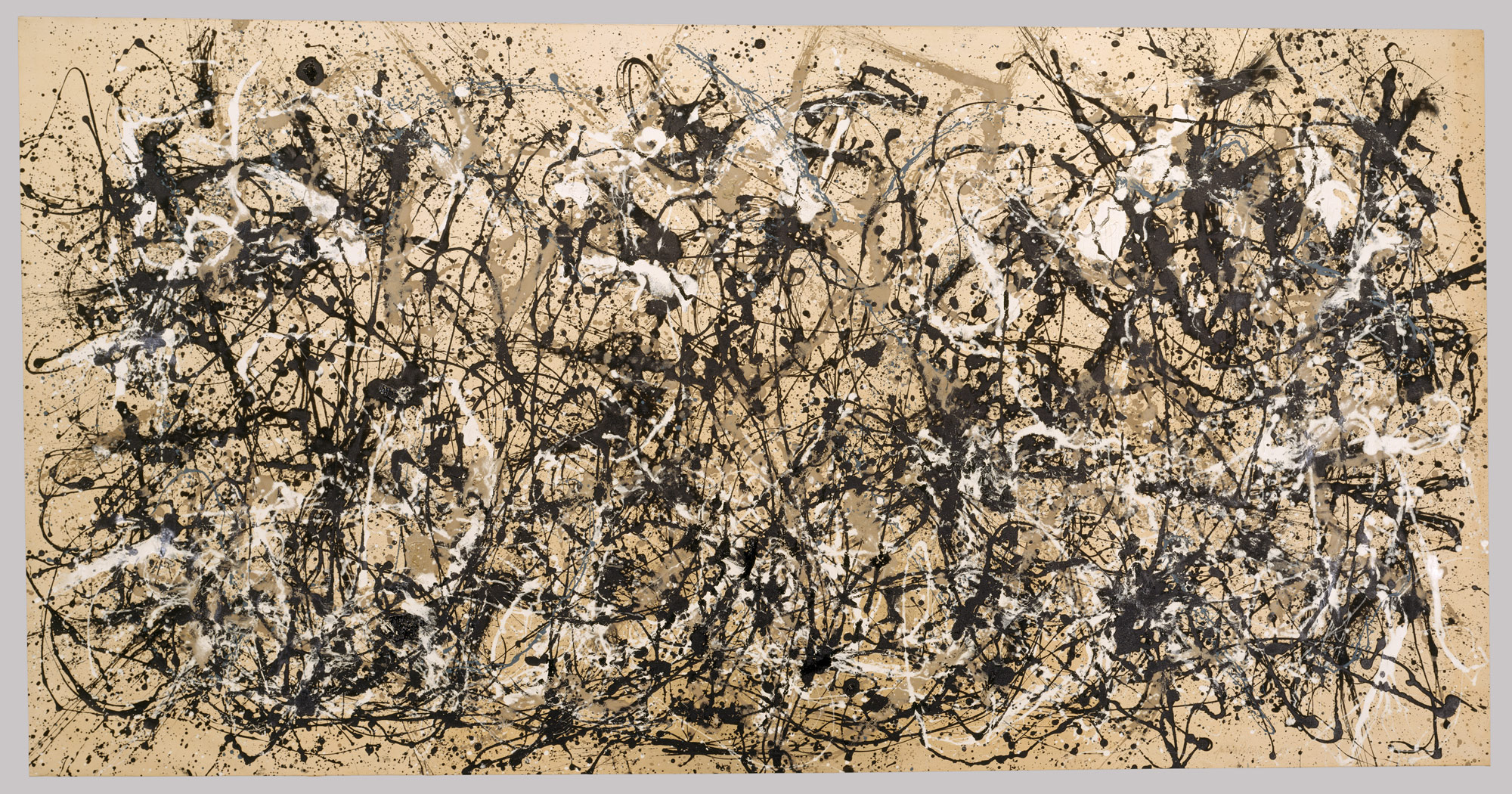 |
| Jackson Pollock's "Autumn Rhythm" |
 Writing and journalism flourished under the Federal Writers Project in a similar manner to contemporary art. One of the masterpieces of the 1900s, "American Guide Series", was one of the products of this project. Many of the 6,000 writers employed by the FWP helped write this guide, in which each of the (then) 48 states' history and culture was documented. In addition, many employed writers would also use federal funds to interview former slaves and record their memories. These would be turned into powerful narratives, and were eventually compiled into the piece, "Slave Narratives: A Folk History of Slavery in the United States from Interviews with Former Slaves". Today, this collection makes up an important part of the Library of Congress.
Writing and journalism flourished under the Federal Writers Project in a similar manner to contemporary art. One of the masterpieces of the 1900s, "American Guide Series", was one of the products of this project. Many of the 6,000 writers employed by the FWP helped write this guide, in which each of the (then) 48 states' history and culture was documented. In addition, many employed writers would also use federal funds to interview former slaves and record their memories. These would be turned into powerful narratives, and were eventually compiled into the piece, "Slave Narratives: A Folk History of Slavery in the United States from Interviews with Former Slaves". Today, this collection makes up an important part of the Library of Congress.The Federal Music Project and Federal Theater Project hold a similar importance in American culture. Around 15,000 musicians were employed by the Federal Music Project, which oversaw the production of 225,000 performances. The style of music at these performances varied greatly, including classical, folk, and most notably, African American and Latino music. The Federal Music Project oversaw the rise of new music styles while promoting music appreciation through easily accessible concerts. The Federal Theater Project, meanwhile, was also doing its part to promote public appreciation of the arts. Their performances, which were played in front of audiences totaling thirty million, controversially included many black actors. In both of these subdivisions, the underlying theme of cultural development combined with social reparations was continued.
Each of these subdivisions of the WPA, despite primarily being intended for employment purposes, helped develop American culture and increase public interest in the arts. The Federal Art Project oversaw a vital transitional period of art culture, while the illuminating pieces done by the employees of the Federal Writers Project are still relevant today. The Federal Music Project and Theater Project both also shifted American culture with their attempted racial bridges. Franklin Delano Roosevelt's Federal One was a major political reform, but its enduring effect was on social and cultural reform.
http://www.theartstory.org/org-wpa.htm
https://www.loc.gov/collections/slave-narratives-from-the-federal-writers-project-1936-to-1938/about-this-collection/
https://memory.loc.gov/diglib/ihas/loc.natlib.scdb.200033720/default.html
Kennedy, David M. Freedom from Fear: The American People in Depression and War, 1929-1945. New York: Oxford UP, 1999. Print.
http://www.metmuseum.org/toah/images/hb/hb_57.92.jpg
http://www.loc.gov/rr/program/bib/newdeal/images/american_guide_series_LC-USZC2-5780.jpg
Nice post Ben. It really gave some insight into how Roosevelt did significantly more for the arts and social works than he originally seemed to me personally. As such a rugged man, its cool to know that he had a side to him that placed value in artistic talent in America.
ReplyDeleteNice post Ben. It really gave some insight into how Roosevelt did significantly more for the arts and social works than he originally seemed to me personally. As such a rugged man, its cool to know that he had a side to him that placed value in artistic talent in America.
ReplyDelete